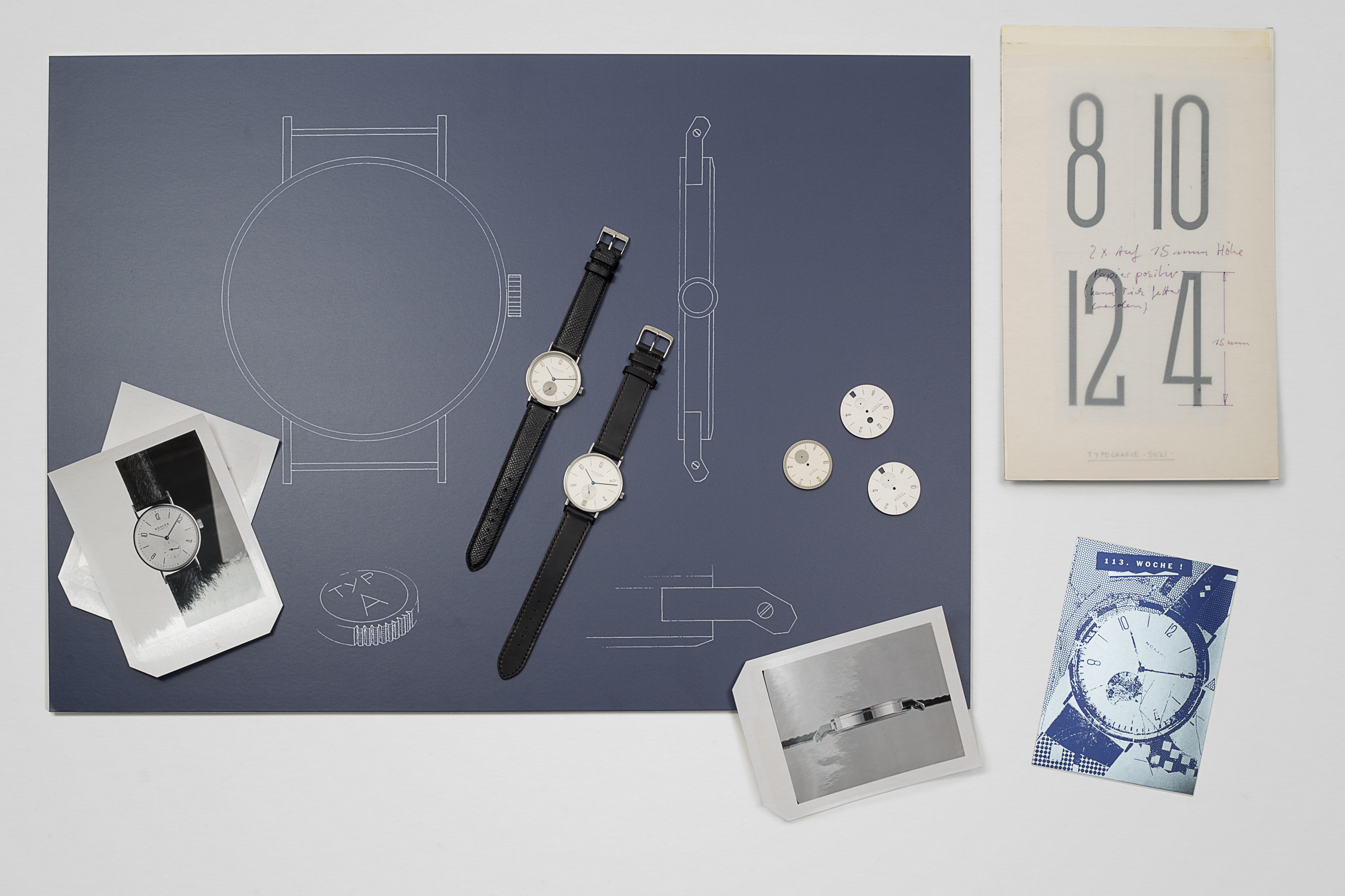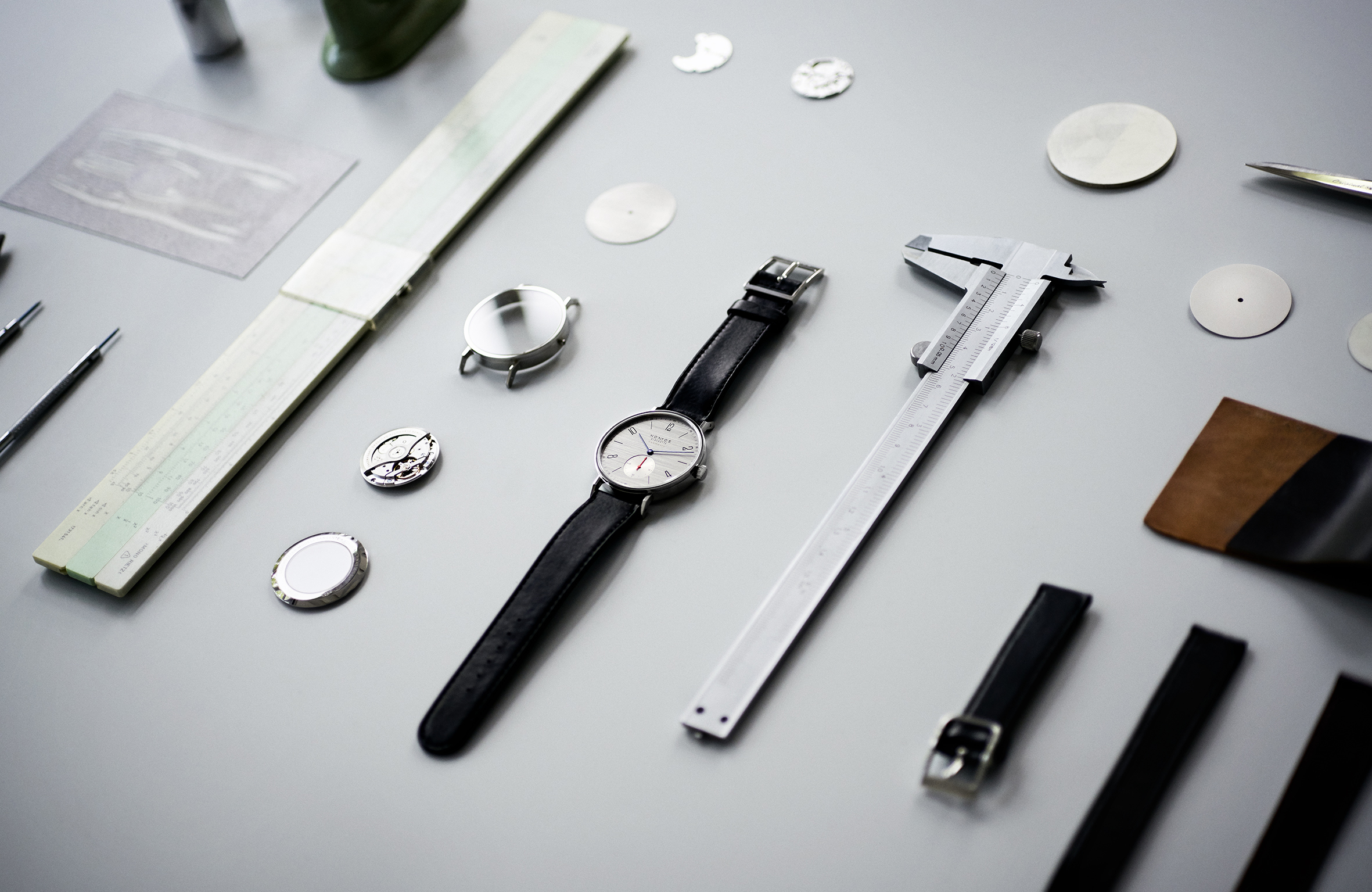Cultural Perspectives • 11 Sep 2018
NOMOS Glashütte – Watches for People Who Like Design
German Association of Craftsmen
It’s hard to believe that German-made goods were once out of favour with the world. It had nothing to do with the quality. Rather, war and politics propagated negative perceptions, causing Deutschland’s mighty machinery to slow to a grind.
It took the Deutscher Werkbund movement (and later, the Bauhaus School) to bring them back up to full speed. Formed in 1907, the Werkbund an association of artists created to reshape public perception and accessibility of German products by pairing creativity with business smarts and engineering expertise.

Designers, architects, and creatives contributed to the effort; initiating a unique movement that fused German arts and crafts with mass manufacturing. Werkbund design held mastery over machines, creating understated, fun, quirky and timeless high-quality products at affordable prices. This formula makes for success even amongst today’s quality-hungry and design-savvy consumers. Brands like Muji, Bosch and Uniqlo stand out from the crowded market with their quality, affordability, and minimalist design – all elements that echo (to varying degrees) the Werkbund philosophy in the 20th Century.

A Wall Falls, A Brand Rises
While the Deutscher Werkbund dissolved the mental barriers associated with German products, there was one more barrier to break before Nomos would arrive on the watchmaking scene. The fall of the Berlin Wall ushered in a new generation of German innovation. And it was in 1990 that Germany’s youngest luxury watch brand – Nomos- planted the seeds for a bright future in the East German town of Glashütte.

It was no coincidence that Roland Schwertner, the company’s founder decided to move to this small town. Glashütte has a history of high-end watchmaking dating back to 1845. In those intervening years, Germany became a world leader in scaling up production without compromising quality. This applies as much to cars as it does to watches. And in most instances, a good German watch is a watch that was (and still is) made in Glashütte.
Made in Glashütte
As the story goes, Roland searched the town’s historical records to familiarise himself with the watchmaking terrain. He came across a company called Nomos from the previous century. This defunct clockmaker carried the Greek word for balance and restraint in its’ title; qualities that perfectly express Nomos’ quirky watches.

To emphasize the stringent quality standards of this unique town, the appellation “Glashütte” was placed under special protection. Only companies that create at least 50 percent of the value of a watch’s calibre in Glashütte are allowed to label their timepieces as “Glashütte watches.” NOMOS Glashütte goes far beyond the required 50 percent—and makes up to 95 percent of each movement on site. For a relatively young brand, it’s quite remarkable Nomos has managed to make its own patented escapement (called the Swing System), one of the final challenges the manufacture faced in becoming a truly independent maker of movements. Nomos even makes their own hairspring, a remarkable achievement!

Starting From Scratch
These innovative achievements set Nomos watches apart from the crowd, both in function, form, and philosophy. Having grown alongside a generation of millennials, Nomos isn’t burdened by history. They’ve been given a clean slate to take the best of Glashütte watchmaking and to then do things their way. It’s a bit of a quiet rebellion.
Craving independence, the company’s investment in in-house manufacturing was imperative in order to improve and innovate. These qualities are at the core of Glashütte-based watchmaking and ensure that they not only stay ahead of their competitors but also stay relevant in a fast-changing world.

Berlinerblau
Glashütte may be the mechanical heart of Nomos’, but Berlin is its’ creative soul. In true Werkbund style, the firm opened its’ own creative agency, Berlinerblau, solely for the purpose of working with Berlin-based creatives. Nomos is the agency’s only client, and a variety of designers, artists, and ideators partner with the agency to generate new watch designs, advertisements, and content. One of those creatives, Industrial Designer Mark Braun, worked on the design for the Minimatik. The first Nomos watch to come with their patented Swing System escapement, it’s a quirky take on minimalist watches. Its circular power reserve indicator and colourful hour markers add a splash of colour and break up the uniformity of the dial.

At first glance, the Minimatik’s face doesn’t appear to be anything but stripped-back simplicity. At second glance it reveals a more playfulness nature. Fluorescent orange, cyan blue, red, silver, and charcoal feature on the Minimatik models in understated brilliance. The Minimatik is emblematic of Nomos’ approach towards colour. Just enough is used to show personality, but there’s a threshold Nomos doesn’t cross. Nomos never uses colour in excess (aside from some of the brightly coloured Club and Ahoi references), one reason why there’s a tendency to think of Nomos watches as a tad dressier than their contemporaries. This artful balance and focus on restraint explain why Nomos has amassed a loyal following of architects, designers and creatives.

Taking it to the Autobahn
Venturing into new territory, Nomos worked with Werner Aisslinger for the design of the Autobahn, its first auto-inspired watch. The timepiece features elements clearly inspired by sports cars – perhaps the most obvious feature being the luminous superluminova ring reminiscent of a glowing dashboard. Launched at Baselworld 2018, the Nomos Autobahn neomatik 41 belongs to a rare cadre of auto-inspired wristwatches that can fly under the radar as an understated watch to wear with a suit. Truth be told, this wasn’t an expected move from the German manufacture, which makes it all the more exciting. It shows that after 30 years, the brand isn’t settling down anytime soon.

Click here to explore more Nomos watches.
Discover more about the Nomos Autobahn here.







